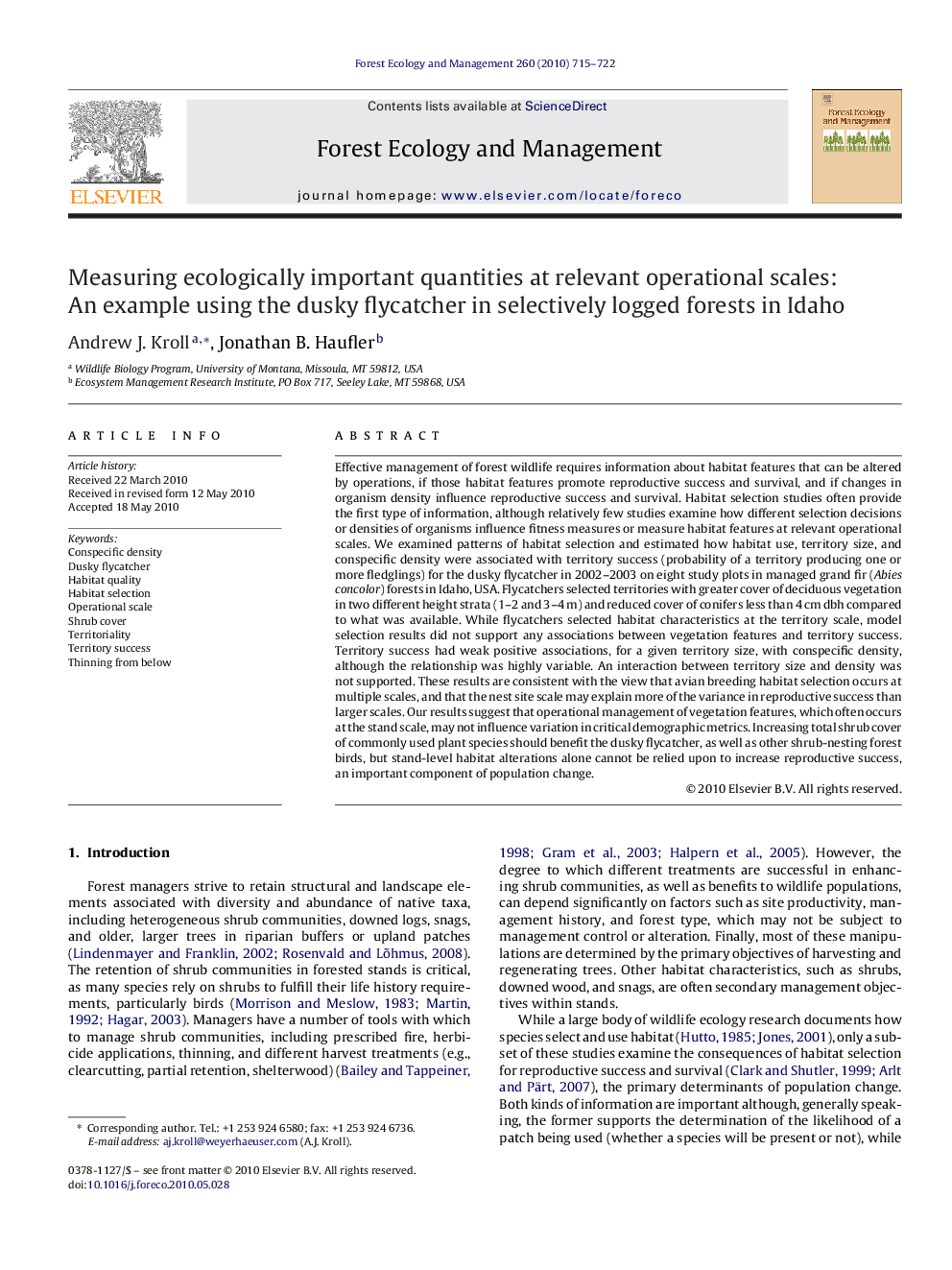| Article ID | Journal | Published Year | Pages | File Type |
|---|---|---|---|---|
| 88395 | Forest Ecology and Management | 2010 | 8 Pages |
Effective management of forest wildlife requires information about habitat features that can be altered by operations, if those habitat features promote reproductive success and survival, and if changes in organism density influence reproductive success and survival. Habitat selection studies often provide the first type of information, although relatively few studies examine how different selection decisions or densities of organisms influence fitness measures or measure habitat features at relevant operational scales. We examined patterns of habitat selection and estimated how habitat use, territory size, and conspecific density were associated with territory success (probability of a territory producing one or more fledglings) for the dusky flycatcher in 2002–2003 on eight study plots in managed grand fir (Abies concolor) forests in Idaho, USA. Flycatchers selected territories with greater cover of deciduous vegetation in two different height strata (1–2 and 3–4 m) and reduced cover of conifers less than 4 cm dbh compared to what was available. While flycatchers selected habitat characteristics at the territory scale, model selection results did not support any associations between vegetation features and territory success. Territory success had weak positive associations, for a given territory size, with conspecific density, although the relationship was highly variable. An interaction between territory size and density was not supported. These results are consistent with the view that avian breeding habitat selection occurs at multiple scales, and that the nest site scale may explain more of the variance in reproductive success than larger scales. Our results suggest that operational management of vegetation features, which often occurs at the stand scale, may not influence variation in critical demographic metrics. Increasing total shrub cover of commonly used plant species should benefit the dusky flycatcher, as well as other shrub-nesting forest birds, but stand-level habitat alterations alone cannot be relied upon to increase reproductive success, an important component of population change.
